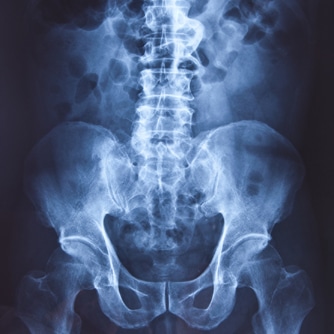Vitamin D deficiency is a widespread medical condition that plays a major role in human bone health. Fracture susceptibility in the context of low vitamin D has been primarily associated with defective mineralization of collagenous matrix (osteoid). However, bone’s fracture resistance is due to toughening mechanisms at various hierarchical levels ranging from the nano- to the microstructure. Thus, we hypothesize that the increase in fracture risk with vitamin D deficiency may be triggered by numerous pathological changes and may not solely derive from the absence of mineralized bone. The team collected samples of iliac crest bone cores from 30 participants, half of whom were deficient in vitamin D and showed early signs of osteomalacia. For this study, a normal vitamin D level was defined as a serum concentration of 20 micrograms per liter or higher. For the vitamin D deficiency group the mean serum concentration was 10 micrograms per liter. The researchers analyzed the bone samples using Fourier Transform Infrared (FTIR) spectroscopy and X-ray computed microtomography, and found that while vitamin D-deficient subjects had less overall mineralization due to a reduction of mineralized bone, underneath the new non-mineralized surfaces, the existing bone was actually more heavily mineralized, and displayed the structural characteristics – mature collagen molecules and mineral crystals – of older and more brittle bone. Writing that: “Our analyses reveal the aged nature of the remaining mineralized bone and its greatly decreased fracture resistance,” the study authors submit that: “our study expands the current clinical understanding of the pathophysiology of vitamin D deficiency and helps explain why well-balanced vitamin D levels are essential to maintain bone’s structural integrity.”
New Consequence of Vitamin D Deficiency Identified
Bjorn Busse, Hrishikesh A. Bale, Elizabeth A. Zimmermann, Brian Panganiban, Holly D. Barth, Robert O. Ritchie, et al. “Vitamin D Deficiency Induces Early Signs of Aging in Human Bone, Increasing the Risk of Fracture.” Sci Transl Med, 10 July 2013, 5:193ra88.
RELATED ARTICLES




